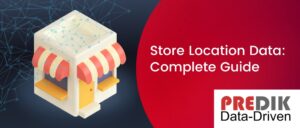Companies rely on the efficient use of big data and location intelligence techniques as the axis of all their decision-making process, reducing the risks of new investments associated with expansion plans, site selection, or new store openings.
At PREDIK Data-Driven we support global corporations to optimize their expansion strategies with 100% data-driven methodologies. One of our clients, a regional sporting goods retail corporation, was able to reduce the risks of its expansion investment plan by relying on solutions generated by foot traffic analytics, location intelligence, and point-of-interest analytics.
CASE STUDY: LOCATION INTELLIGENCE APPLIED TO THE SITE SELECTION PLAN OF A SPORTING GOODS RETAIL COMPANY
Problem to be addressed
The company, dedicated to the commercialization of sporting goods, needed to identify the most suitable areas for the opening and management of new points of sale in a Latin American country.
Our Business Intelligence solution
At PREDIK Data-Driven we developed a probabilistic model that collects geographic, social-demographic, and subjective information about preferences and interests of the potential customers of the stores of the retail company.
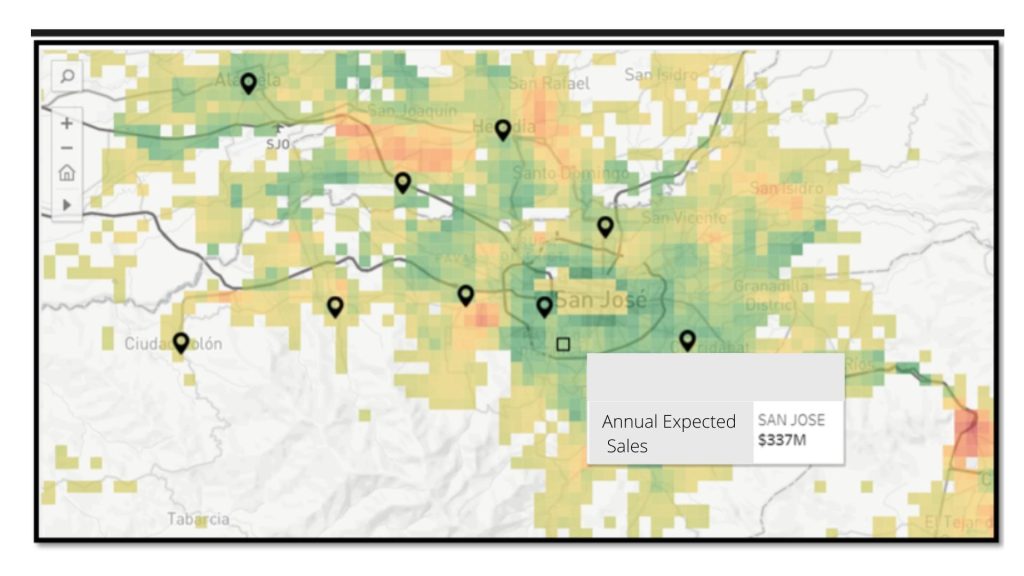
Methodology and data sources employed
The methodology used for the development of this solution consisted of the collection, cleaning, standardization, validation, and analysis of all the information from secondary and third-party sources, including, but not limited to: records in social networks, online behavior, business directories, vehicular traffic, consumer surveys, and import records.
Among the parameters contemplated for the model include vehicular and pedestrian foot traffic in the areas of interest, heat maps of the floating, resident, and working population, concentration and identification of the sporting goods stores in the area, the characterization of points of interest in the “sports” category as evidenced by the behavior patterns and preferences of consumers who lived or traveled in the areas of interest, with an estimate of potential expenses in stores similar to those intended to be opened by our client.
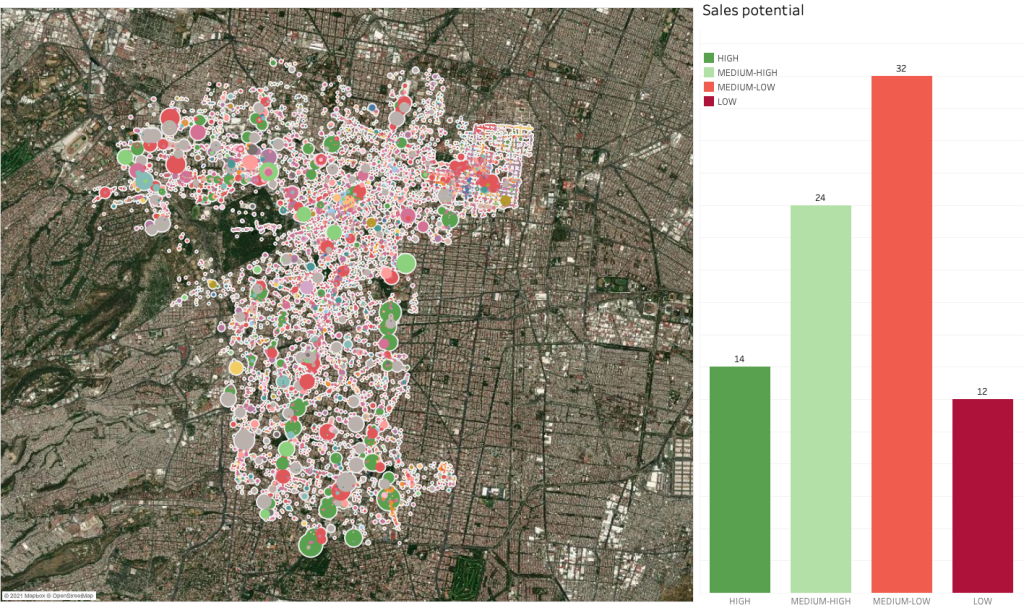
First, we conducted an analysis of our client’s current points of sale using location intelligence and foot traffic analytics, identifying parameters such as:
- The number and characteristics of people visiting their sporting goods stores.
- The times and moments of the day when people usually visit a sporting goods store.
- The dwell time of customers inside the stores.
- The daily visit counts categorized by the hours of the day to identify the power hours of the stores.
- Other places their customers usually visit before and after entering their point of sale.
- The number of shared and unique customers that engage with the competitors.
- The evolution of visits throughout the different seasons of the year.
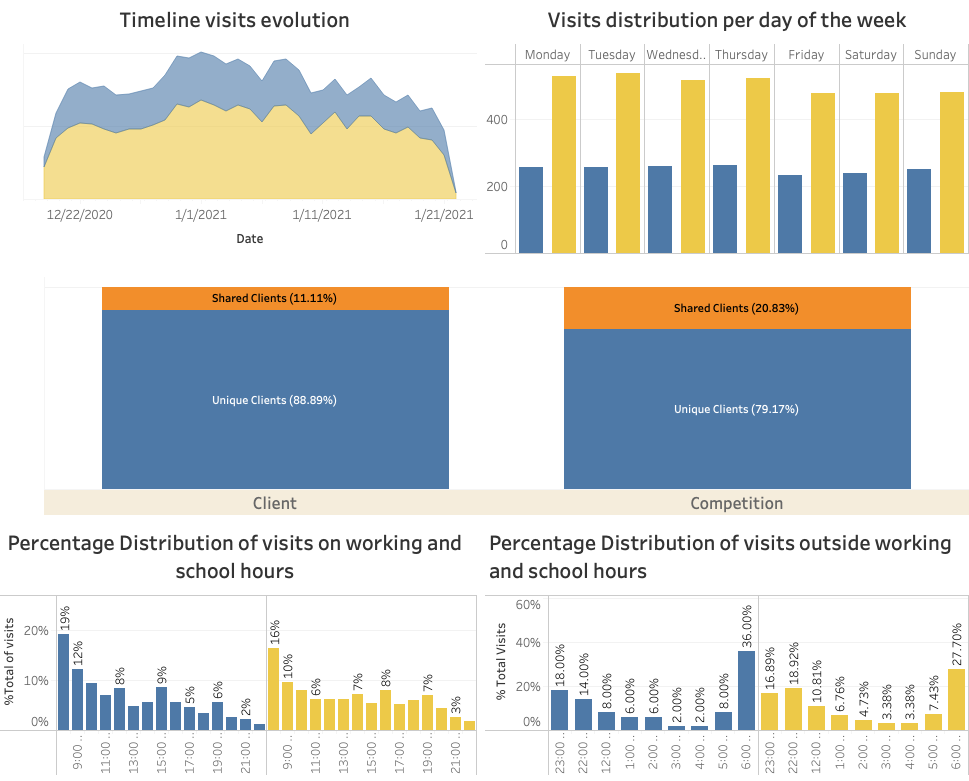
After gathering all this information, we obtained a key overview of our client in order to identify potential areas for expansion.
By analyzing several points of interest, we generated a model that provided us with valuable information on brand positioning, market trends, mobility patterns, and consumer behavior in different zones. By relating it to other data layers, we identified potential areas for expansion, answering questions such as:
- Which mobility patterns did consumers transiting through the potential expansion areas displayed?
- What is the relative wealth index level of consumers in the identified areas?
- What kind of pedestrian and vehicular footfall was recorded over various time periods and times of the day?
- Which locations near potential expansion locations are most and least visited?
- What is the market potential for sporting goods in the expansion areas?
- Which are the preferences of consumers when it comes to purchasing sporting goods?
- Who are the potential competitors that could affect the expansion model?
- Which is the profile of consumers visiting these areas?
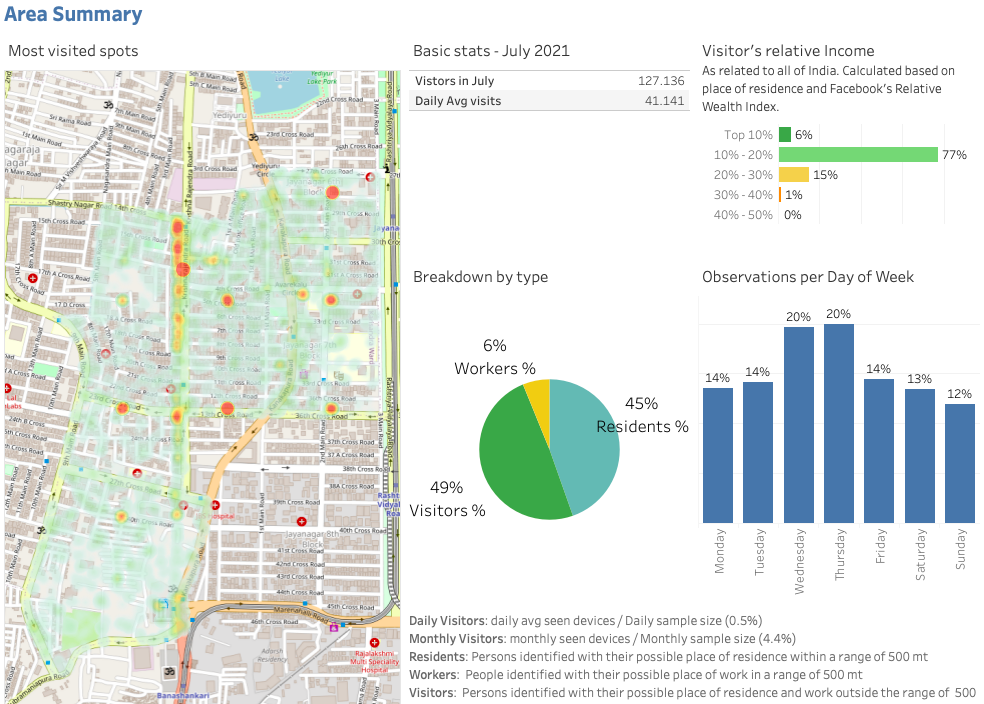
Turnover of existing stores and potential of new outlets
To enrich the site selection evaluation model, billing information from the company’s existing stores was incorporated and used to compare areas with similar commercial characteristics to the new locations, making it possible to estimate the sales that could be attained, allowing to verify whether the sales of each existing store were within the expected billing range, above or below.
Final Result
Through the use of Big Data and machine learning techniques, the site selection model generated, allowed us to identify the areas with the best suitability for the opening of new stores.

